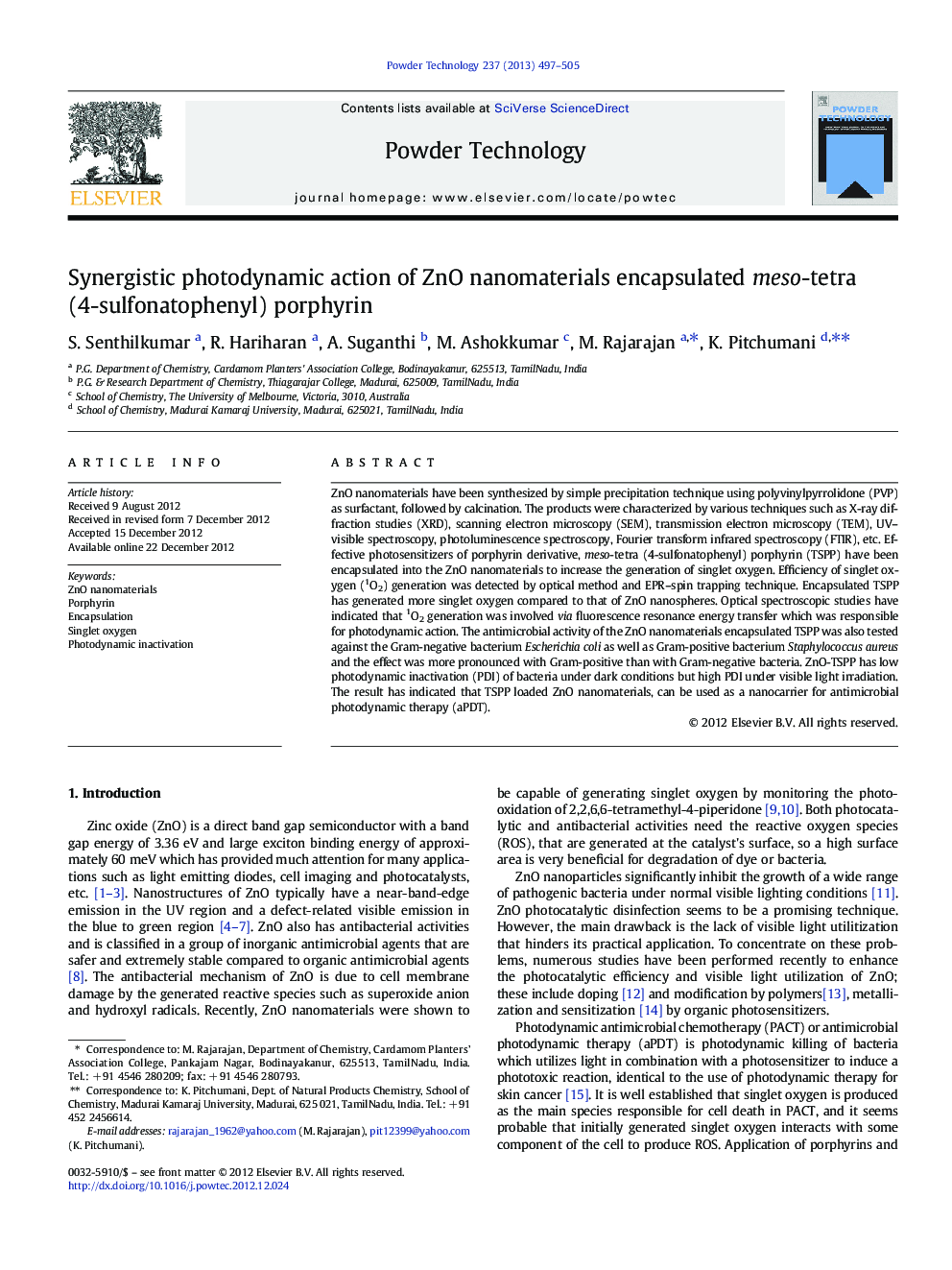| Article ID | Journal | Published Year | Pages | File Type |
|---|---|---|---|---|
| 236868 | Powder Technology | 2013 | 9 Pages |
ZnO nanomaterials have been synthesized by simple precipitation technique using polyvinylpyrrolidone (PVP) as surfactant, followed by calcination. The products were characterized by various techniques such as X-ray diffraction studies (XRD), scanning electron microscopy (SEM), transmission electron microscopy (TEM), UV–visible spectroscopy, photoluminescence spectroscopy, Fourier transform infrared spectroscopy (FTIR), etc. Effective photosensitizers of porphyrin derivative, meso-tetra (4-sulfonatophenyl) porphyrin (TSPP) have been encapsulated into the ZnO nanomaterials to increase the generation of singlet oxygen. Efficiency of singlet oxygen (1O2) generation was detected by optical method and EPR–spin trapping technique. Encapsulated TSPP has generated more singlet oxygen compared to that of ZnO nanospheres. Optical spectroscopic studies have indicated that 1O2 generation was involved via fluorescence resonance energy transfer which was responsible for photodynamic action. The antimicrobial activity of the ZnO nanomaterials encapsulated TSPP was also tested against the Gram-negative bacterium Escherichia coli as well as Gram-positive bacterium Staphylococcus aureus and the effect was more pronounced with Gram-positive than with Gram-negative bacteria. ZnO-TSPP has low photodynamic inactivation (PDI) of bacteria under dark conditions but high PDI under visible light irradiation. The result has indicated that TSPP loaded ZnO nanomaterials, can be used as a nanocarrier for antimicrobial photodynamic therapy (aPDT).
Graphical abstractEnergy transfer is efficient in ZnO-TSPP system under visible light which in turn makes singlet oxygen formation, main cytotoxic species for aPDT and skin cancer treatment.Figure optionsDownload full-size imageDownload as PowerPoint slideHighlights► ZnO-TSPP has generated more singlet oxygen compared to ZnO nanospheres. ► Optical spectroscopic studies indicate that 1O2 generation via fluorescence resonance energy transfer. ► The antibacterial activity was more pronounced with Gram-positive than Gram-negative bacteria. ► Compare with TSPP and ZnO alone, ZnO-TSPP have high PDI of bacteria under visible light irradiation. ► These observations may provide the basis for the development of aPDT.
